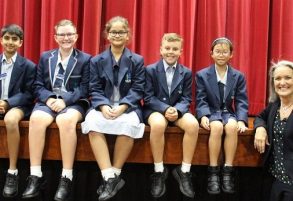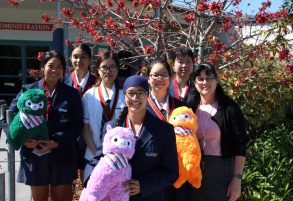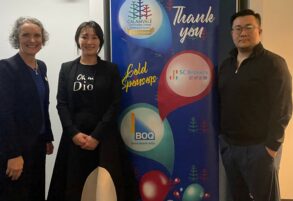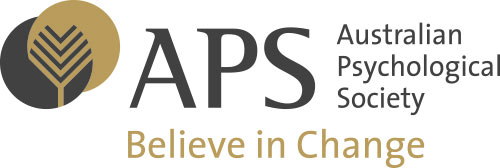In this issue
Building a strong culture of parent engagement
Respect Responsibility Resilience Initiative
Internationals Women’s Day
Positive parenting for the digital age
Helping children cope after a tragic event
Positive Education School
Action in the Primary Years Program
Michael Griffin visits CCC
Congratulations to QATSIF Scholarship students
Join CAST – What is CAST you ask!
CAST up coming Events

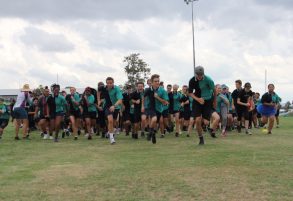
Cross Country
The Cross Country is always a positive and fun filled event at Calamvale Community College and this year was no exception. Congratulations to the students who participated in the competitive cross country races in the morning. It was wonderful to continue our partnership with the ‘I can I will’ foundation …
Cross Country

The Cross Country is always a positive and fun filled event at Calamvale Community College and this year was no exception. Congratulations to the students who participated in the competitive cross country races in the morning.
It was wonderful to continue our partnership with the ‘I can I will’ foundation and the Calamvale Special School, which resulted in hundreds of dollars being raised and the beauty of inclusion being on display as both student from Calamvale Community College and Calamvale Special School watched Secondary Principal Mrs Sharyn Angel be ‘slimed’ for a good cause. Students then embarked on a fun filled obstacle course which resulted in many house points being accumulated. Congratulations to THARAH for being overall winning house on the day.


As always we thank our HPE and Sport staff for the tireless work they do to provide opportunities for our students.




Positive parenting for the digital age
At Calamvale Community College, we use a blended approach to learning. We are committed to developing student’s 21st Century technology skills, whilst also recognising the …
Positive parenting for the digital age

At Calamvale Community College, we use a blended approach to learning. We are committed to developing student’s 21st Century technology skills, whilst also recognising the need for students to be able to write for extended periods of time in readiness for their external exams in year 12. Our core values are Respect, Responsibility, Resilience and Initiative. For students to be appropriately prepared for lessons each day they must demonstrate responsibility and initiative by bringing along a fully charged laptop to school as well as their student workbooks and writing materials for their classes.
In 2019, we have introduced Digital Textbooks to the college. There are many benefits to digital textbooks, such as their portability, interactivity, built in assessment and feedback mechanisms.
- All students in year 7 are provided with the full suite of digital textbooks as part of their Student Resource Scheme fees. Therefore, once you have paid your student fees, your family will be sent the digital textbooks code, so that your child can access these resources.
- Students in years 8 and 9 are required to purchase a digital textbook for their mathematics subject. This is listed on the Campion book list which can be found on our College website. This is a separate purchase to the Student Resource Scheme fees.
- Students in years 10 and 11 are required to purchase digital textbooks for their chosen subjects. These are listed on the Campion book list which can be found on our College website. These are separate purchases to the Student Resource Scheme fees.
There are so many advantages with improved technology in our daily life. With the help of mobile technology we are able to talk to our friends and relatives who are living far from us. With the help of the internet, we are able to learn new things and have access to online courses. With the help of aviation technology we are able to reach distant places within hours which took years of time to reach in olden days. With the help of social networking we are able to find our childhood friends and relatives and we are able to document and share important events in our life. With the help of information technology we are able to share information to any part of the world within milliseconds.
However, it is important that in this digital age, we understand how to keep our children safe and how they must behave responsibly to ensure they can receive all the benefits that technology can offer, without it being detrimental to their health or well-being. The most important thing to remember is that if we are purposeful with our parenting, we can set our students up for successful futures.
Helping children learn online safety
Make sure children and young people:
- question what they see online and realise not everything they see is real
- know your family values and become critical consumers. You might ask ‘Why do you think they are doing that?’ or ‘What would happen if they did that in real life?’
- are respectful in all communication and don’t do or say anything online they wouldn’t in person
- do not share personal information without your knowledge
- know how to screen or block unwanted contacts that happen by phone, email, text, social networking or online games
- understand that what they put online can be seen by people they may not intend. It may be there forever and impact relationships and jobs
- know as they get older they can develop a positive online ‘digital identity’. When well managed, this can showcase skills and creativity.
It is important to stay involved in your child’s online life. How you do this will change as children gain skills and become more independent.
The online world
The best way to keep children and young people safe is to talk with them and be involved in their online world. You will be building your own technology skills, as well as a trusting relationship with your child. They will be more likely to come to you if something worries them.
Parents can:
- help children and young people understand the risks, and practise safe online skills at home and away from home
- supervise online activities and set rules and limits. These can change as children develop their online skills and become more mature
talk about how and when you will use screen technology in your home. You might agree:- to keep devices in a room that is open. It will be easier to be aware of what children are doing
- that devices will be out of bedrooms after ‘lights out’ as they can interfere with sleep
- make sure children and young people have plenty of technology-free time and develop a range of ‘offline’ skills and interests. Learning to entertain themselves without technology is a skill that needs practice. Physical activity and creative play are important for healthy development
- model safe and responsible use yourself.
Don’t let the online world shape children and young people’s values. They need balanced information and guidance from you.
Setting up safe internet use
There are things you can do to help keep children safe online, eg filter unsuitable content or monitor their internet use. If you decide to do this, make sure you are up front and explain your reasons. If you go behind children’s back, it may encourage them to hide things from you.
You could:
- enable Google SafeSearch on all devices
- enable parental controls on streaming services such as YouTube, Netflix and AppleTV
- install software that filters content or lets you choose what times devices can be used/not used
- get to know how your child’s phone or device works so you can help them use it safely
- know children’s email addresses and passwords so you can monitor activity. If you do this, remember to let children know what you are doing and why
- check the permissions you are giving when you or your children install a new app. Your personal data such as photos and documents might be accessible to others. Read unbiased reviews before installing apps
- know how your device stores data, and whether this is secure. Many devices use ‘cloud storage’, eg Google Drive or Apple iCloud, to store data such as documents, photos or videos.
- Make sure children and young people:
-
- know the risks and benefits of ‘geo-location’ or ‘checking-in’ functions that identify their location. These can be limited or disabled
- use a PIN or access code on their phone or device so if they are stolen they can’t be used to send negative texts or images to contact lists
- do not expose younger children to inappropriate content.
The best way to keep children safe online is to know what they are doing. No software can completely guarantee their safety.
Cyber bullying
Cyber bullying is when technology is used to harm others. It usually happens more than once and can involve abusive or threatening emails or texts, making fun of someone, or posting embarrassing or damaging information or photos. It is a big concern because it causes harm, can escalate quickly and involve a lot more people than face-to-face bullying. It can also happen anytime day or night, and parents may not know it is happening at all.
If there is cyber bullying:
- talk with your child or teen and show you understand what this means for them. It can have a big impact emotionally, socially, and sometimes physically. Reassure them that it can be dealt with, and you will support them
- use the report/block function to report it to the site or service it occurs on. If they do not remove it, contact the Office of the Children’s eSafety Commissioner who can have it removed
- report it to the school if the bullying is by another student. Schools have anti-bullying policies and can help stop it
- do not confront the person directly if you know who is doing it. This can make things worse
- report serious threats to your local police. A threat made online could be against the law
- help your child get support if they are very upset. School counsellors, the Kids Helpline or eheadspace are good places to start.
Make sure children and young people:
- have other responsible adults to talk to if they are not comfortable telling you
- keep a record of bullying messages, eg screenshots
- know how to support a friend who is bullied
- know not to bully others, and to act in a respectful way at all times
- are careful about personal information which could make them vulnerable if shared online. Remember once it is online, they lose control over who sees it.
Sometimes people put offensive messages online for ‘fun’ and to provoke a response. This is called trolling. If it continues, it is considered to be cyber bullying and sites are obliged to remove the material.
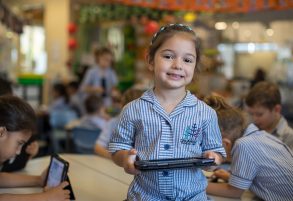
Action in the Primary Years Program
“If it is to be it’s up to me” (William H Johnsen) The first newsletter article for 2019 discussed ‘agency’ as being one of …
Action in the Primary Years Program
“If it is to be it’s up to me”
(William H Johnsen)
The first newsletter article for 2019 discussed ‘agency’ as being one of the key focus areas of the International Baccalaureate (IB) Enhanced Primary Years Program (PYP). Agency relates to the space for student voice and choice in their learning.
At the core of student agency is ‘action’ and this has always been, even more so now with the Enhanced PYP, integral to the program and an overarching outcome of international-mindedness. Through taking individual and collective action, students will come to understand the responsibilities associated with being internationally minded and appreciate the benefits of working with others for a shared purpose. It is through action that students see that they have the power to make a difference and see themselves as being capable and active agents of change.
Demonstrations of action can include:
- participation – contributing as individual or group
- advocacy – action to support social / environmental / political change
- social justice – relation to rights, equality and equity, social well-being and justice
- social entrepreneurship – innovative, resourceful and sustainable social change
- lifestyle choices – eg. consumption, impact of choices.
A focus on ‘action’ in learning, brings to the forefront the imperative questions: ‘Why is this knowledge important to know? How is this knowledge going to help me / others in the future?’ As teachers plan units of inquiry they consider what the overarching ideas are and how exploring these lend themselves to the possibility of students taking action. Some units of inquiry have an explicit and obvious focus on action (eg. proposing environmentally sustainable actions) where others rely on a student making their own connections with new knowledge, motivating them to take personal action in respect to their learning (further researching an area of interest and sharing this with the class).
Action can be big and it can be small, at school, home and in the community. Regardless, students can be supported through the process and in all cases, taking action should be recognised and celebrated. Students need to be taught the steps and perseverance that is often required in taking action. The action cycle is a simple yet powerful tool used to teach students how to take action. By going through the three steps of choosing, acting and then reflecting back upon the results of their choice, students are able to grow socially and personally, developing skills such as cooperation, problem solving, conflict resolution and critical thinking. They also exhibit their commitment to the Attributes of the IB Learner Profile. This is an important part of a student’s participation in their own learning.
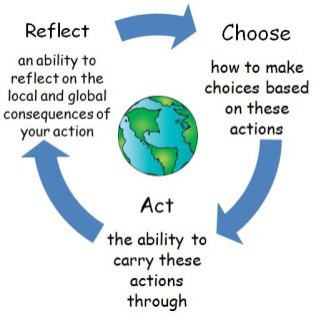
There are many examples of action across the Junior School, big and small examples of students taking their knowledge further and applying it in real life situations. Last year, a group of Year 2 students successfully advocated for the banning of plastic straws at tuckshop. Recently, as Year 6 students presented their learning in an exhibition style, many students took action through their high level of participation and initiative, to ensure that they effectively communicated their knowledge to an audience. Here are some of the responses to this action by our College Administration Team:
I always love visiting student exhibitions to see students demonstrating their curiosity and learning. Year 6’s exhibition on Thursday of Week 8 was a wonderful experience. Students had chosen a vast selection of different influential people in world history, and I learnt a lot from observing and speaking to the students about their chosen subjects. From civil rights activists to influential sportspeople, the variety was the highlight for me. Most importantly, seeing the pride on students’ faces when articulating their learning, for me, is the best part of PYP in action. I look forward to students sharing more of their learning experiences with me as the year progresses.
Sean Loriaux, Deputy Principal
It’s great seeing the students becoming more able researchers and inquirers. They are developing their ability to present and communicate their understanding in different ways, which will only continue to grow throughout the year.
Deb Kelly, Deputy Principal

Congratulations to our Round 10 QATSIF (Queensland Aboriginal and Torres Strait Islander Foundation) QCE Scholarship.
Congratulations to our Round 10 QATSIF (Queensland Aboriginal and Torres Strait Islander Foundation) QCE Scholarship. Hannah Getawan Zane Hill Shahnae Algie Jordy Houser We …
Congratulations to our Round 10 QATSIF (Queensland Aboriginal and Torres Strait Islander Foundation) QCE Scholarship.

Congratulations to our Round 10 QATSIF (Queensland Aboriginal and Torres Strait Islander Foundation) QCE Scholarship.
Hannah Getawan
Zane Hill
Shahnae Algie
Jordy Houser
We hope these four very deserving students are inspired to pursue their studies with passion and dedication. Congratulations to each of you.If you have Aboriginal or Torres Strait Islander cultural heritage and would like to apply for the 2019 scholarship round, please access this website for all the information and contact Mrs Volschenk here at the College for support. www.qatsif.org.au
Latest Opportunity!
All Aboriginal and Torres Strait Islander students, years 7 through to 12 are invited to submit a creative piece for this year’s QATSIF Creative Arts Competition. This year’s theme is Grounded in truth, Walk together with courage. The creative piece could be from any of the creative arts: eg. Visual art, poetry, dance, drama, photography, music, design, videography etc.
Competition Closes: 5pm Friday 10 May 10
More details to be announced soon.
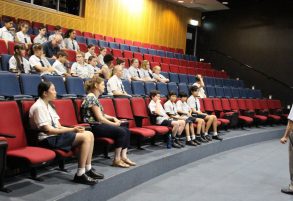
Michael Griffin visits CCC
International motivational speaker, Michael Griffin, normally based in Adelaide addressed parents and students at Calamvale Community College. An educator, speaker, pianist and author of several …
Michael Griffin visits CCC

International motivational speaker, Michael Griffin, normally based in Adelaide addressed parents and students at Calamvale Community College. An educator, speaker, pianist and author of several books, including Learning Strategies for Musical Success, Michael motivated our students with great advice about the value of a Growth Mindset. He challenged our students that if they wanted to be good at something, really good, expert, then they had to practice 10 000 times.
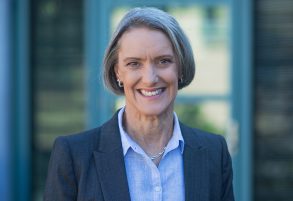
Respect Responsibility Resilience Initiative
Our times call for our students and our community to step up and live the principles that our College values, together. It is not by …
Respect Responsibility Resilience Initiative
Our times call for our students and our community to step up and live the principles that our College values, together. It is not by luck that our College has historically and continues to be, a relatively safe place. CCC is not idyllic or perfect but on any one day, its diversity far outweighs any disunity. We are not free from bullying, but we are determined to address it and that is a constant challenge which we pursue with rigour. Cultural disharmony is not typical of our interactions and our playground is a safe place for our students. Occasionally the events of the world, touch our local community, never more so than when those events are motivated by intolerance, fear and hate. But we are resilient and we and our children will overcome these influences, together. It is not only the tragedy of Christchurch that has impacted CCC at present, but that event has certainly focused our attention on the values that underpin who we are: respect, responsibility, resilience and initiative.
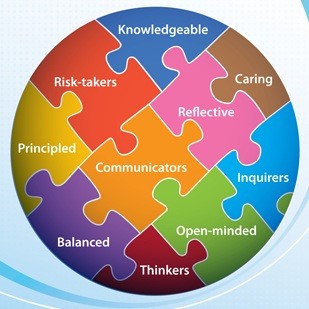 On January 1, 2020, Queensland will for the first time have a Human Rights Act which will enshrine 23 rights for every individual (https://www.adcq.qld.gov.au/human-rights/queensland-human-rights-act) living in our state. I would like to think that our community has already begun our students’ education in a key plank of this legislation – respect. As an International Baccalaureate World School we embrace the Learner Profile and all of its characteristics. As a community we teach our children to respect themselves and each other and to value these learner profile attributes in each other. But without modelling, our children will not understand how to enact those words. If we leave an empty space or a silence, questionable public role models who perhaps do not espouse our values will fill the gap. Those of us, parents and teachers, who are directly in front of our children and students, must demonstrate the attributes we want them to copy.
On January 1, 2020, Queensland will for the first time have a Human Rights Act which will enshrine 23 rights for every individual (https://www.adcq.qld.gov.au/human-rights/queensland-human-rights-act) living in our state. I would like to think that our community has already begun our students’ education in a key plank of this legislation – respect. As an International Baccalaureate World School we embrace the Learner Profile and all of its characteristics. As a community we teach our children to respect themselves and each other and to value these learner profile attributes in each other. But without modelling, our children will not understand how to enact those words. If we leave an empty space or a silence, questionable public role models who perhaps do not espouse our values will fill the gap. Those of us, parents and teachers, who are directly in front of our children and students, must demonstrate the attributes we want them to copy.
Let’s take the initiative and recognise that our children listen to us every day, they hear what we say, how we say it and what we do having said it. At this time in particular, let’s make sure that our children know how to show respect. At CCC, let’s make respect our highest priority and make that unconditional in our words and actions everyday. Let’s be caring, principled and balanced. Let’s be open-minded and on occasions when we aren’t, let’s be reflective and take responsibility for that and right, to the best of our ability, whatever wrong we might have done. Let’s model this for our children, so that they grow up in a better world. Let’s consciously show them how to behave with respect to ourselves and others. Let’s model how to take responsibility with courage not shame. Our community knows how to support each other and grow our resilience. Let’s all step up, step forward and take the initiative to make a difference for the betterment of all of our children. https://www.ibo.org/globalassets/publications/recognition/learnerprofile-en.pdf
Say NO to Bullying; R U OK?; Harmony Day
There is a familiar message here and it is – the importance of our community addressing issues that impact our children. Social media and its 24/7 continues to be an issue for us. Our students are jeopardising their learning time as staff endeavour to address the impact of social media on children’s health and wellbeing. We do not shy away for the need to support students through difficult times or address behaviours that are anti-social and inappropriate. But we need your help! Many of the issues causing our students pain and distress, sometimes leading to significant harm, anxiety and possibly depression are emanating from the lives they live on social media. These lives, and sometimes there are several, are lived predominantly through smartphones. Much of the angst that students experience and that comes to the surface during school hours has begun during the 18 hours that students are not within our supervision. That schools can supervise students’ use of mobile phone use is a challenge. As such, removing smartphones from the school environment would change the learning landscape, predominantly for the better. But that is almost impossible and is not going to happen beyond junior school. Junior School processes of leaving phones with teachers is effective and will continue. There would be issues with such action, for both parents and students, if we followed the same process in secondary school. So in the lieu of ‘banning the smartphone’, I am appealing to parents and carers to take a more active role in supervising your students’ smartphones. Where parents pay for smartphones and plans, there is some leverage.
Calamvale Community College’s stance is that students are only supposed to access their phones when a teacher gives permission.
They are not permitted to:
film other students
take photographs of other students
post any visual material including students in CCC uniform onto social media platforms
Students who breach these rules are given significant penalties and have been excluded in serious cases. Our College does not tolerate or condone bullying. In these times, bullying frequently relies on the above listed behaviours. We are currently reviewing our students’ use of mobile phones within the College grounds. This will not result in a ban, but it may result in some curtailed activity and students’ acceptance of responsibility for what emanates from their phone, no matter who is the user at the time of the communication.
Whatever you can do to support your student’s understanding of the impact of social media, posting visuals or opting into inappropriate conversations, please do. Devices collected at night and charged in a common family space is a great idea – most of the negative social media communication happens after dark when we think our children are asleep. Teenagers need on average nine hours sleep a night. There are some sites below which may support your efforts. We have a 24 hour turnaround time for complaints posted to our college email: admin@calamvalecc.eq.edu.au
And remember, you can ‘block them’, it’s not the ultimate solution but it’s a start.
https://www.qld.gov.au/education/schools/health/bullying
https://www.youtube.com/watch?v=juVibnfKCB8
https://kidshelpline.com.au/teens/issues/bullying

South Side Youth Orchestra
Hello from the Southside Youth Orchestra! We run two orchestras for school-age string players, founded in 2017. With currently over 60 members, we cater …
South Side Youth Orchestra
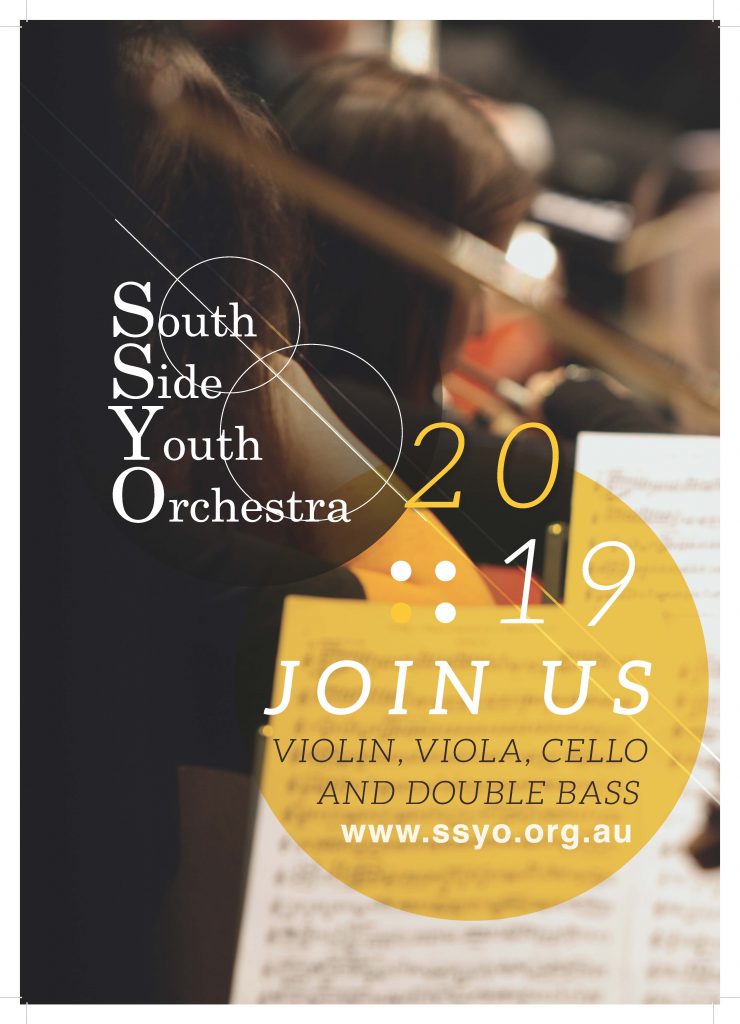
Hello from the Southside Youth Orchestra!
We run two orchestras for school-age string players, founded in 2017. With currently over 60 members, we cater for players ranging from Preliminary level to AMEB Grade 8. We always welcome new members, and will soon be auditioning for Term 2 entry!
Our experienced conductors and educators, Mr Daniel Holloway and Ms Jemma Powell, guide students to develop their musical potential through ensemble skills and teamwork. The students also have fun forming friendships with other young string players! Our members range in age from 7 to 16 years old.
Our two orchestras perform a concert at the end of every term to showcase the repertoire that they have learned. In 2018, we performed as part of the Southside String Festival, combined for a concert with the Western Suburbs String Orchestra, and took our community outreach program to a retirement home, in addition to our regular concerts. In 2019, we have exciting concerts planned, including a combined concert for our advanced orchestra SSYO1 with the Queensland Youth Orchestra’s Junior String Ensemble.
SSYO2: minimum one year of learning, basic note-reading and rhythm skills required.
Rehearsal time: 8:30 – 10:00 Saturday mornings
SSYO1: minimum AMEB Grade 3 standard or equivalent, with ensemble experience taken into account.
Rehearsal time: 10:15 – 12:00 Saturday mornings
If you would like to join the Southside Youth Orchestra, please apply here for an audition. We look forward to welcoming new members into the Southside Youth Orchestra family!

After School Soccer Programme
Calamvale Community College After School Soccer Programme In Association with Soccer X Pty Ltd We are excited to tell you about the after school …
After School Soccer Programme

Calamvale Community College
After School Soccer Programme In Association with Soccer X Pty Ltd
 We are excited to tell you about the after school soccer programme we will be running at Calamvale Community College during Term 2.
We are excited to tell you about the after school soccer programme we will be running at Calamvale Community College during Term 2.
Throughout the 8 weeks our coaches will lead fun, educational and active sessions sending your child home energised and with a smile on their face.
Why choose Soccer X?
As well as providing fun filled Soccer sessions which teach the players new skills & techniques we aim to provide & improve the following skills:
Social Skills
Team building
General Fitness
Sense of achievement
We believe by integrating these skills into our programmes it will help your children become well rounded young adults.
All standards are welcome, so do not worry if you
have never played before.
Most answers to your questions can be found by checking our website, but if you do not find an answer, please call Sam on 0415324917 or email: info@soccer-x.com
For wet weather updates please follow Soccer X on Facebook or see us at www.Soccer-X.com
Programme Details
Day: Tuesday
Start Date: 7 May 2019
Time: 3-4pm
Where: School Oval
Ages: Prep – Yr 6 (Boys & Girls)
Registration:
To avoid disappointment ALL registrations and
payments must be completed ONLINE prior to
the first session.
Cost: 96 (8 weeks)
Please visit www.Soccer-X.com to register and pay
Soccer X Training Kit (optional):
1) Shorts & T Shirt = $35
2) Shorts, T-Shirt, Bag & Cap = $50

FAQ’s
What happens if it rains?
The session will take place undercover. In extreme weather conditions sessions will be cancelled and parents notified via SMS & Facebook.

What should my child wear for soccer?
Anything that is comfortable. Shorts, t-shirt, runners/boots. Soccer boots are not essential.

Join the Calamvale CAST
Positive Engagement is one of the branches of the College’s Positive Education framework that focuses on students becoming the best version of themselves. We are …
Join the Calamvale CAST

Positive Engagement is one of the branches of the College’s Positive Education framework that focuses on students becoming the best version of themselves. We are committed to providing extra-curricular activities that are opportunities for students to be creative, curious and clever through the CAST schedule. CAST stands for:
C – Clubs
A – Academic Competitions
S – Sport
T – Tutorials
Each term we will publish a new version of CAST for families to discuss and plan around.
Get involved – join the CCC CAST with over 70 opportunities to engage.


Positive Education School
Did you know that Calamvale Community College is a Positive Education school? Calamvale Community College’s wellbeing framework is based on positive psychology. Positive Education …
Positive Education School
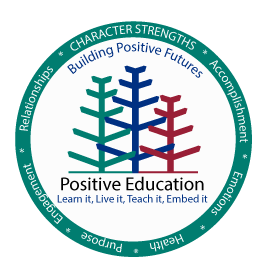
Did you know that Calamvale Community College is a Positive Education school?
Calamvale Community College’s wellbeing framework is based on positive psychology. Positive Education is the application of positive psychology in an educational setting. It is a framework that is based on the science of wellbeing and the strategies people can apply in their lives to experience a flourishing existence. Positive Education is an evidence-based approach to student wellbeing that blends academic learning with skills that fall within the seven domains that appear around the outside ring of CCC’s Positive Education symbol (see above). Positive Education skills relate to concepts such as altruism, gratitude, optimism, resilience, growth mindset, engagement, mindfulness and identifying strengths in self and others.
Keep your eye out for more about Positive Education at CCC in upcoming newsletters.

Nerieda Anderson
Calamvale Community College
Developmental Guidance Officer
Psychologist

Helping Children Cope After Tragic Event
Tips for Talking With and Helping Children and Young People Cope After Tragic Events Distressing events like tragic accidents in your local area, or that …
Helping Children Cope After Tragic Event
Tips for Talking With and Helping Children and Young People Cope After Tragic Events
Distressing events like tragic accidents in your local area, or that took place in familiar places like a popular holiday location, or even disasters that happen far away, but are covered by the media, can be powerful and upsetting incidents that intrude on daily life.
This resource sheet includes some helpful tips for parents, caregivers and teachers for helping children and young people to cope following local, national, or even world tragedies.
(Australian Psychological Society)
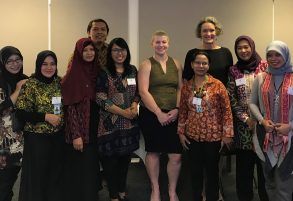
Kristin Perissinotto – International Women’s Day speech
I’m a powerlifter. Powerlifting is a performance-based sport, so we get tested on our strength, and compete to see who can move the most …
Kristin Perissinotto – International Women’s Day speech
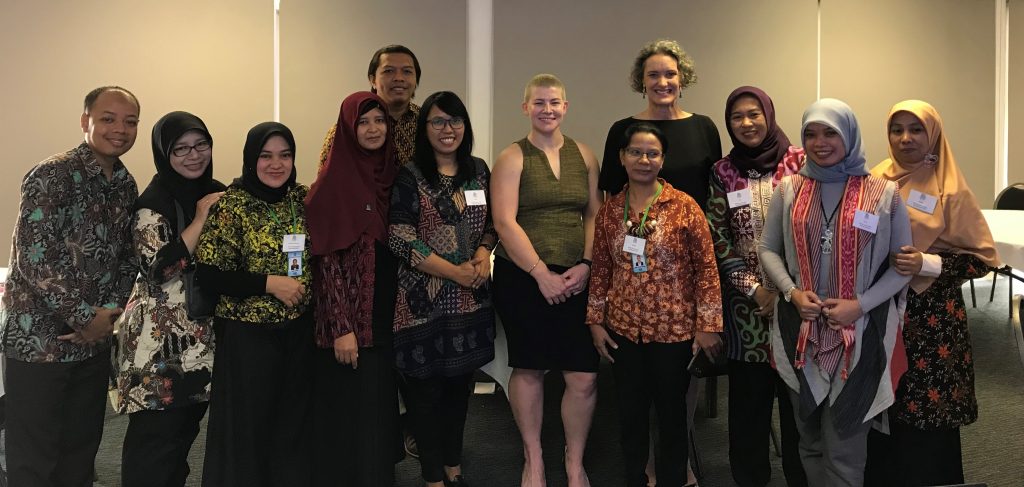
I’m a powerlifter. Powerlifting is a performance-based sport, so we get tested on our strength, and compete to see who can move the most weight. As with all strength sports, powerlifting is heavily male dominated, and we’ve only seen it rise in popularity among women in the last few years. This is because traditionally, men are taught to make themselves larger, and women are taught to make themselves smaller, and to take up less space. This is not only metaphorical, but also physical. Everywhere we look, the fitness industry is pushing products and plans to make women skinny. They use the buzzword ‘toned’ frequently. ‘Toned’ has become somewhat of a societal rule for women. Women are expected to ride that very thin line where we’re not too skinny, but definitely not too big. Toned refers to small muscles. Not too large because that’s masculine, and of course to have a low body fat percentage. Every one of these diet and exercise plans promotes appearance and aesthetics over performance and health. A prime example are Skinny Teas, which have been proven to simply be a laxative in tea form. Skinny teas will make you weigh less on the scales, and at most flatten your stomach for the time you drink them. They do absolutely nothing for your health or fitness.
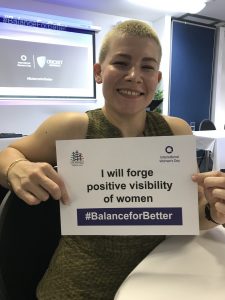 Women have been taught for centuries that the most important thing we can be is attractive, which today means toned. In the 90s it meant skinny. After World War II, it meant fuller figured, or “curvy”. We’ve been on diets in order to appear desirable for generations on generations.
Women have been taught for centuries that the most important thing we can be is attractive, which today means toned. In the 90s it meant skinny. After World War II, it meant fuller figured, or “curvy”. We’ve been on diets in order to appear desirable for generations on generations.
I don’t have a stereotypically feminine body. It’s not on trend either. I’m too big to be toned. Too muscular to be curvy. I have a well developed upper body, which is a big no-no for women. Societal standards tell us upper body muscles are for men to develop, and if women must build muscle, it should only be on the lower body. But my body is strong. I built it with hours in the gym and literal tonnes of food. I feel empowered and independent when I can lift things unassisted, both in the gym and carrying groceries in from the car. I no longer value my body as an objectified entity. It belongs to me, not to society.
Unfortunately, with the increase in women who strength train, strong stereotypes still persist, even among the athletes themselves. Being in the community myself, I always see female athletes claiming that even though they lift heavy, they still ‘look like a woman’. I’m going to break down two issues I have with this statement. 1. What is looking like a woman? If you identify as a woman, however you look is like a woman. There’s not clause in the definition of “woman” that refers to what one looks like. No hair length, breast size, or body shape defines a person as looking like a woman. Diets, hair cuts, weight changes, and clothing choice does not and will never make someone more or less of a woman. The second issue is that this statement is somewhat of an attack on women who have developed a lot of muscle. Saying they are less than. Discounting the effort they put into their bodies. It’s very hard to gain muscle, and it’s generally even harder for women. Genetics also plays a large part in one’s ability to gain muscle, so you could have two women side by side who have trained for equally as long and equally as hard, but have a very different amount of muscle. Comparing ourselves to other people isn’t and has never been the way to get ahead. You will always gain more by lifting others up, rather than tearing them down.
 Reports on female athletes in the media are a prime example of how differently men and women are still treated. When the Olympics rolls around, we will rarely see any media coverage on the women’s beach volleyball doubles, for example. Instead, the media focus on their uniforms. For years, coverage of Serena Williams was dominated by talk about her body. She was too muscular, too masculine, or too dark skinned. Stories upon stories were published about her outfits, which were too colourful. The way she celebrates winning a game was too over the top. She is a woman with a big personality, and society didn’t like it. Despite being one of the greatest tennis players, and all around athletes of our time, she was reduced to somewhat of a spectacle.
Reports on female athletes in the media are a prime example of how differently men and women are still treated. When the Olympics rolls around, we will rarely see any media coverage on the women’s beach volleyball doubles, for example. Instead, the media focus on their uniforms. For years, coverage of Serena Williams was dominated by talk about her body. She was too muscular, too masculine, or too dark skinned. Stories upon stories were published about her outfits, which were too colourful. The way she celebrates winning a game was too over the top. She is a woman with a big personality, and society didn’t like it. Despite being one of the greatest tennis players, and all around athletes of our time, she was reduced to somewhat of a spectacle.
On the other hand, the Russian tennis player Anna Kournikova, who never won a singles championship game, was voted one of the World’s Most Famous Athletes. She has been labelled as “the hot tennis player”. She’s stereotypically attractive, and therefore gets media attention. There was not a game she played where the commentators didn’t comment on her appearance. She retired years ago due to injury, yet is still in the media frequently. Most recently, for the birth of her twins.
The focus on female athletes bodies, attractiveness, is somewhat of a disclaimer. It’s telling the world that their athletic performance, their speed, power, and strength isn’t enough. Attractive female athletes will always get the more ‘positive’ attention, yet very rarely is it for their performance.
We are entering into a body revolution. Times are changing. More and more women are training to get strong and fast. Fit and healthy. Making goals that aren’t based on dress sizes or weight on the scales. Body weight is meaningless in our day to day lives. We should never dictate our lives and happiness by a number on the scale or the size of our clothes
I want to see the world change into a place where women are valued for more than our appearance. I want to see a world where the media report on female athletes without talking about their bodies or outfits, or love lives. I want to see women valued for what they bring to the world.
The past couple of years have seen lots of people pushing back against feminism on the grounds that it is no longer necessary, but I believe everything I’ve just spoken to says otherwise. The argument is that women have the vote, and are allowed to study and work in whichever field we choose. In these regards, yes, we have reached equality – in the Western world anyway. However, to quote Beyonce, gender equality refers to the social, political and economical equality of the sexes.
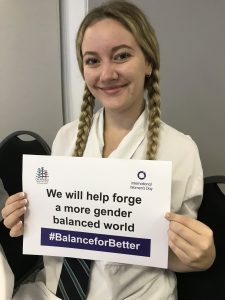 Socially, we still have a ways to go. Men and women are still held to very different standards in society. In Australia, it’s safe to say most of our gender equality problems are societal. Politically, we do not see an equal representation of women in parliament, which is currently made up of 32% women. Our society’s poor treatment of our first Prime Minister, Julia Gillard, showed us that devastatingly, our public cannot handle a woman in a position of power.
Socially, we still have a ways to go. Men and women are still held to very different standards in society. In Australia, it’s safe to say most of our gender equality problems are societal. Politically, we do not see an equal representation of women in parliament, which is currently made up of 32% women. Our society’s poor treatment of our first Prime Minister, Julia Gillard, showed us that devastatingly, our public cannot handle a woman in a position of power.
And, as we know pay parity is 217 years away, so we have not reached economic equality.
Why is gender still on the agenda? Because we haven’t achieved equality. The gender pay gap still exists. It is still deemed odd for men to be stay at home dads. Women are still attacked and abused on the street and in their homes. Claims of harassment by men are still ignored. We live in a country where men with emotions are deemed weak. Women are expected to cry, and men aren’t allowed to. The toxic gender stereotypes in our society, especially in Australia, are damaging all of us.
We teach women that being a mother is the only thing to aspire to. We shame career women who go to work and leave their kids at home. We belittle men who take time off work to care for their children. These things should be a personal choice, not one based on society’s rules. Every woman is capable of having a career, and every man is capable of being a stay at home dad. Women shouldn’t be shamed for taking the less popular route. We can raise children, or work, or look after the home, or all three.
How do we achieve this progressive change? Until a few years ago, I was resigned to the fact that we can’t. I just thought that this was the world, and I had to get over it. I thought that the world was too big and I was too small. But then I realised that if everyone thought this way, nothing would ever change or improve. If the suffragettes decided they couldn’t be bothered, we wouldn’t have the vote. No women would be here today, to learn or to teach. I wouldn’t be allowed to speak to a group or pick my own outfit, or shave my head. If nothing ever changed, we wouldn’t have TV or Netflix or lamps. Slavery would still be the norm, and kings would behead their wives when they got bored of them. The worst thing we can do for our cause is be complacent. So don’t laugh at a joke you think is sexist, or spread rumours about women. Be an ally for our cause. International Women’s Day isn’t only for women. It’s for all of us. To celebrate how far we have come and to fight for progress in the future.

Principal’s News
Building a strong culture of parent engagement As Term One draws to a close, parents in the Junior School have had the opportunity to meet …
Principal’s News
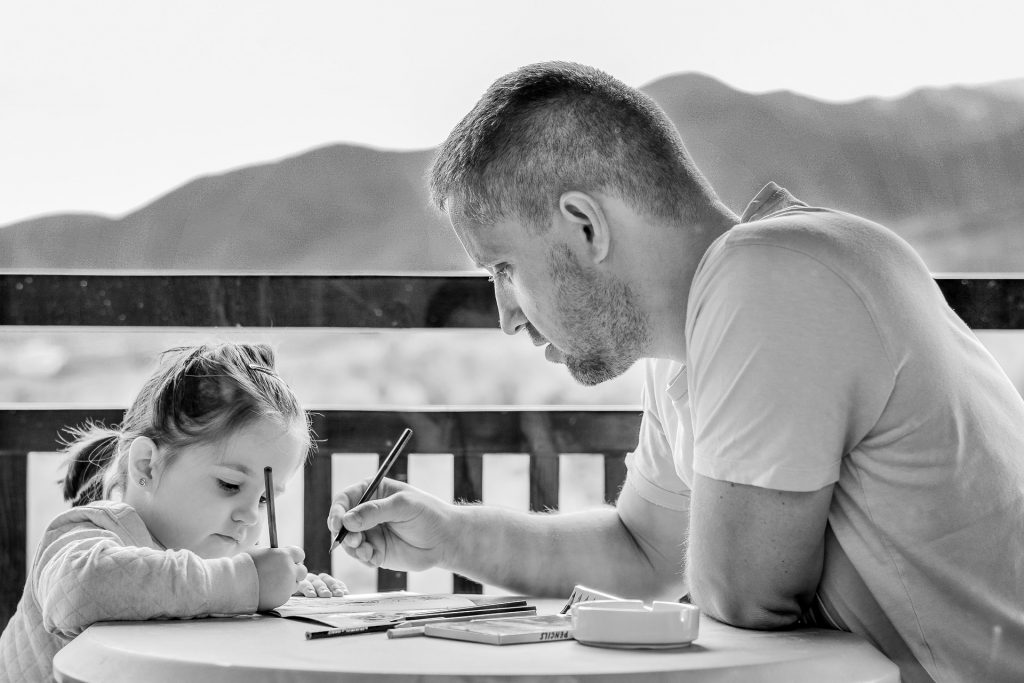 Building a strong culture of parent engagement
Building a strong culture of parent engagement
As Term One draws to a close, parents in the Junior School have had the opportunity to meet with classroom teachers to discuss student progress thus far and set goals for the rest of the semester and the year. Parent-teacher communication plays a big role in helping your child to have a successful academic career. Since parents and teachers know different aspects of a child’s personality, they must work together to solve problems and celebrate gains.
Communicate, Communicate, Communicate!
It’s something parents hear all the time, but it bears repeating. One of the keys to parents and teachers working together is to have good communication. Parents are vital partners in education. They influence their children’s attitudes about learning, and support learning at home. They are a vital link between home and school. And when they become involved in the life of the school, they make our schools better places to learn, grow and thrive. Educators and parents generally agree that positive, supportive and open relationships between home and school, parent and teacher are desirable. Additionally, research has shown that parent engagement and successful parent-teacher partnerships result in improved educational outcomes for students. Teachers and parents provide a vital support system to help students flourish. Both groups are important. When parents and teachers communicate and work together effectively, it can significantly impact each student’s long-term success.
But we cannot confuse the difference between parent involvement in schools and parent engagement. One dictionary definition of involve is “to enfold or envelope,” whereas one of the meanings of engage is “to come together and interlock.” Thus, involvement implies doing to; in contrast, engagement implies doing with.
Parent involvement in schools includes attending events, volunteering in class or other activities, and serving on school councils and parent committees. It’s not that family involvement is bad. Almost all the research says that any kind of increased parent interest and support of students can help. But almost all the research also says that family engagement can produce even better results—for students, for families, for schools, and for their communities (Ferlazzo & Hammond, 2009) As a school we are striving for parent engagement-listening to what parents think, dream, and worry about.

The ACT Government defines parent engagement in two parts—family-led learning and family‑school partnerships:
- Family-led learning focused on high aspirations for children, shared reading, a positive environment for homework, parent-child conversation, a cognitively stimulating home environment and support for social and emotional wellbeing; and
- family-school partnerships that encourage positive parent-teacher relationships, communication about children’s progress, and engagement in the school community, while equipping parents to effectively support and encourage their children’s learning and wellbeing (ACT Government, 2014).
To support parents to effectively support and encourage children’s learning we facilitate a number of parent workshops throughout the school year. Workshops unpacking the Sounds to Letters Spelling Program, supporting students with problem solving and supporting students’ journey in the Primary Years Programme (PYP) are just a few of our offerings and are all designed to equip parents with background information, new knowledge and a toolbox of strategies to support students with learning at home. These are regularly held throughout the year, advertised via email and on Facebook. I encourage you to engage with your school and join us in building partnerships to connect learning at home and school in 2019.



